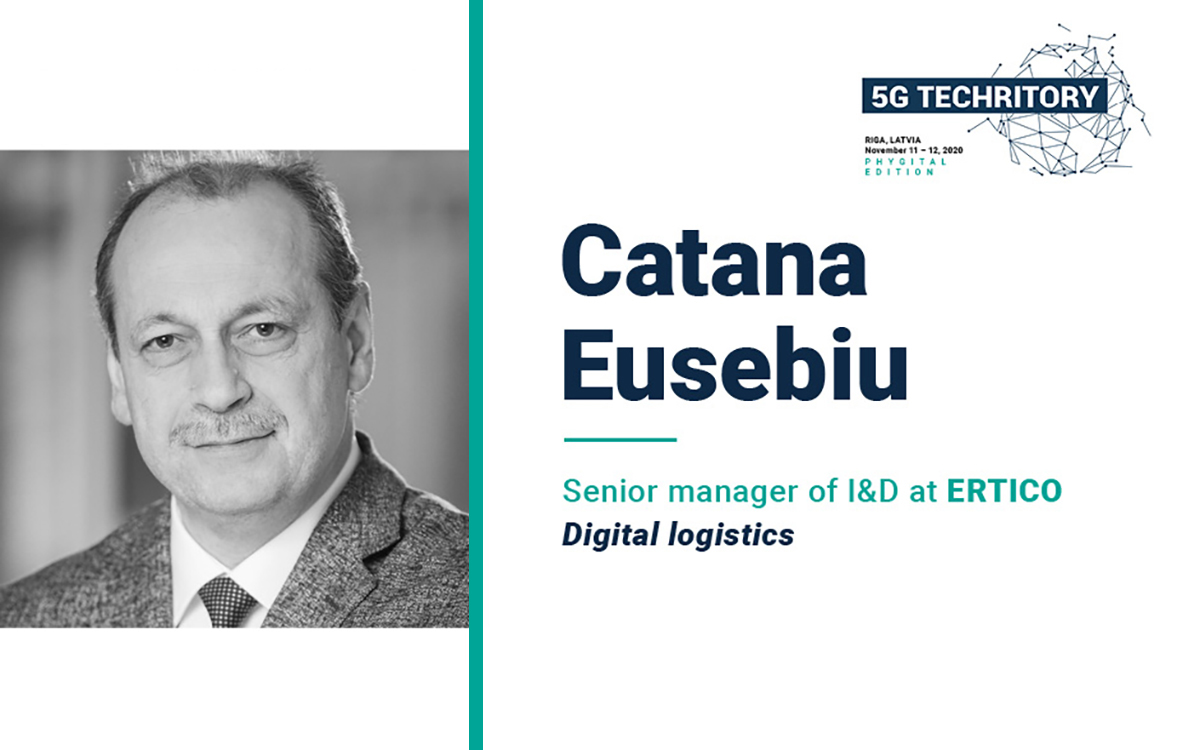What do 5G and digital logistics have in common? Eusebiu Catana, 5G-LOGINNOV coordinator, answered this question at the recently-held 5G Techritory event, where the project was presented together with various use cases from forests to ports and ships.
Digital logistics is one of the big promises of 5G and comes with potentially great efficiencies and benefits. The logistics industry is essential for the European economy and for economic growth: 74% of goods exported or imported to the EU are transported via its seaports. At the same time, the challenges they face are only getting greater: Cargo volumes are increasingly higher (with an expected 57% rise by 2030) while they are also arriving in a shrinking number of vessels: the next generation of Post-Panamax vessels have a capacity of more than 18k containers. But cargo volumes are not just increasing; cargo flow types are also changing due to technological trends, such as Industry 4.0. Moreover, cargo port operators need to comply with increasingly stricter environmental regulations and societal views for sustainable operations.
At this critical juncture, 5G is the convergence technology for the new generation of mobile networks, expected to be massively deployed starting from 2020. 5G promises also to address the diverse and rather demanding performance requirements of a wide range of use cases, in terms of data rates, capacity, security, reliability, availability, latency and impact on battery life. Although the 5G frequency bands are expected to be assigned in all European Member States by the end of 2020, and standardisation activities have yielded advanced features (with 3GPP Release 16), to date the number of 5G trials has not exploded, raising some concerns about the actual ability in monetising the appointed Use Cases. The latter, known as “5G paradox” seems not to justify a quick roll-out of 5G in any developed country.
“In the framework of ERTICO’s 5G projects, a strategic and innovative framework was proposed, addressing the integration and validation of technologies as part of an overall architecture representing a subset of 5G network functions. All the ERTICO 5G projects support 5G technological blocks, including new generation of 5G terminals for future Connected and Automated Mobility (CAM), new types of Internet of Things-5G devices, data analytics, next generation traffic management and emerging subsets of 5G networks functions, for port areas and city-ports to handle upcoming and future capacity, traffic, efficiency and environmental challenges” said Dr Eusebiu Catana.
“Certainly, the most important policy at European level in the past several years is the European Green Deal, aiming at full decarbonisation of the EU bloc by 2050, where ERTICO will strongly contribute to decarbonising one of the most carbon-intense fields, which is transport.” Said Dr Catana, who continued “This will be done by supporting multimodal transport and supporting three European ports in showcasing concrete 5G-enabled solutions for significant reductions in CO2 emissions”.

